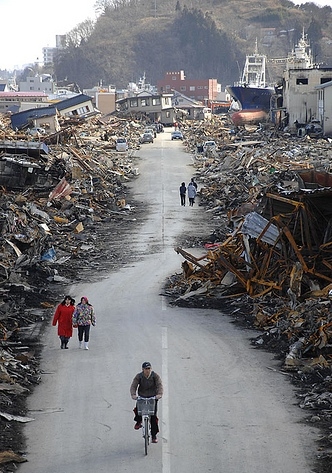Op Eds & Articles

Professor Ehud Harari is an expert in Japanese politics. He teaches at the Hebrew University of Jerusalem.
Two scenarios, optimistic and pessimistic, drawing on different interpretations of Japanese “past experience” and “national character” can be envisaged of the long-term political and economic implications of the triple disaster in Japan. I call them the Isaiah and Jeremiah Visions, respectively.
The Isaiah Vision dominates the mass media. Japan has rapidly recovered from several major disasters it experienced in the past due to visionary, dedicated, future-oriented government-and-industry leadership, and a resilient, disciplined, loyal, hard-working, educated population imbued with a strong sense of common destiny and national solidarity.
The disaster sets a common national goal of reconstruction and development, as did the almost total physical destruction of all major cities and the loss of empire at the end of the Pacific War in 1945. The leaders will rise to the occasion and bury all political hatchets, and the whole population will rally around them. The waves of sympathy towards the Japanese people sweeping governments and civil societies around the world, including China, Korea and Russia, its traditional antagonists, will mitigate tensions in Northeast Asia.
Japan’s economy being as large and modern as it is, given some time, can cope with even a disaster of the present magnitude. The Japanese economy is an important part of the global economy. Nowadays a large number of Japanese firms produce high-tech components, which are an indispensable link in the chain of production of various goods carried out in several countries; moreover, Japan is still a major donor of foreign aid. Therefore, Japanese reconstruction and development is not strictly a Japanese interest, but an interest of the whole world, and Japanese partners in the developed and developing countries will act accordingly.
The Jeremiah Vision considers past experience to be irrelevant and the common view of the “national character” to be myopic, if not a caricature of a complex reality. The only disaster of similar proportions in the modern era was at the end of World War II. The “Japanese Miracle” of the late 1950s to early 1970s resulted from a confluence of factors: the legacy of the US Occupation; the boost to the economy of the Korean War; the buyer’s international market of raw materials – including oil – Japan lacks; the Cold-War motivated US tolerance of Japanese restrictions on imports and foreign direct investments while opening its own market to Japanese goods and services; the need and ability to “catch up with the West” technologically by learning from the West; the relatively young population, many of whom had moved from the rural areas to the cities in search of work ; and the visionary leadership that after a decade of internal strife reached a triangular (government, business, and labor) “social contract” and compensated the rural community, thus narrowing the gaps among social classes.
Nowadays a different Japanese society (technologically, demographically, socio-economically, and politically) has to operate in a different international environment. The Japanese economy, based largely on exports, has not recovered from the global financial crisis. The state is burdened with a public debt of about 200% of GDP. Japan has “caught up” technologically, and now has no West to learn from. The education system is ailing: performance at school has declined and instances of violence increased. Japanese society is aging rapidly and the pension system is in disarray, but the government has a restrictive emigration policy; and foreigners, such as skilled Indian IT technicians, are likely to leave and will be afraid to come. The political system has been in disarray, and no outstanding leaders have appeared on the horizons. Finally, national solidarity will soon be replaced by another characteristic of Japanese society: factionalism.
The Jeremiah Vision should not be taken lightly. But as a human being, and as one with warm feelings toward the Japanese, developed during 51 years of study of Japan, including several long stays at the University of Tokyo as guest researcher and visiting professor, I sincerely hope that the Isaiah Vision will prevail.

 Back
Back